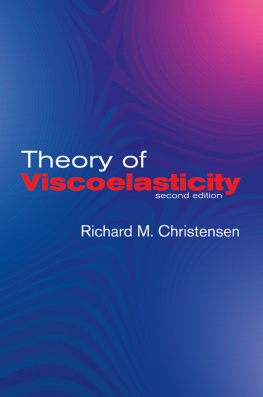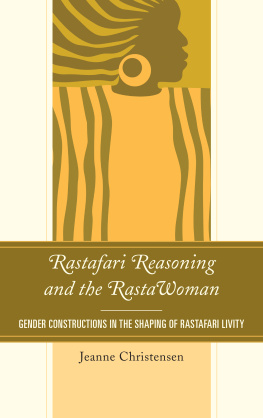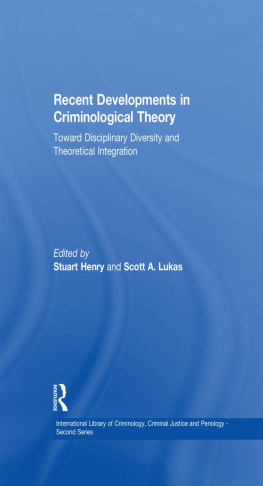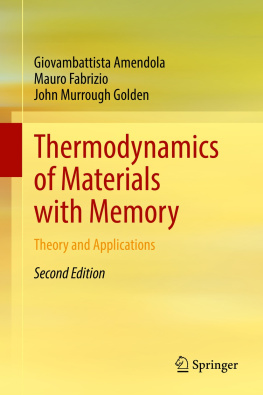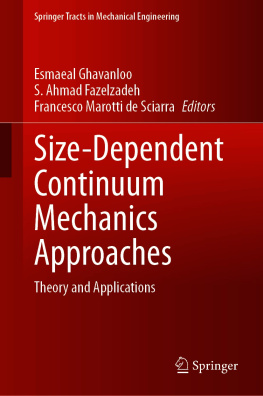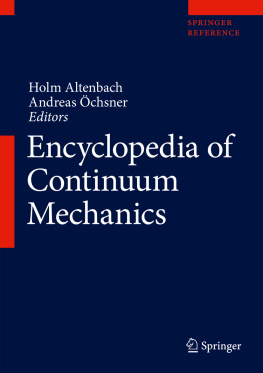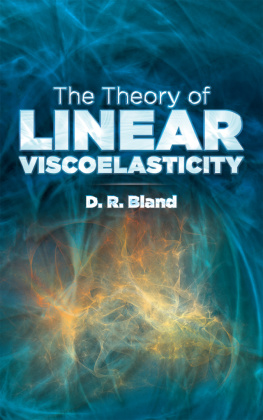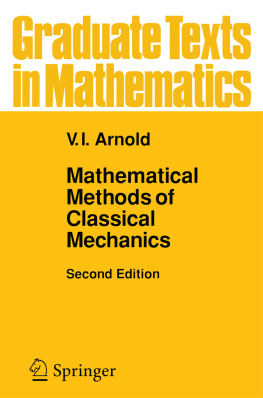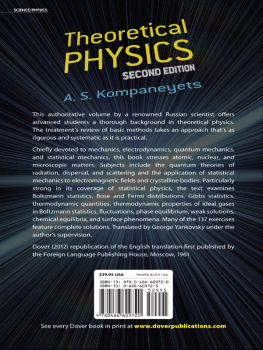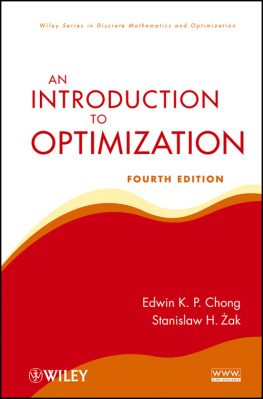THEORY OF VISCOELASTICITY
SECOND EDITION
RICHARD M. CHRISTENSEN
LAWRENCE LIVERMORE NATIONAL LABORATORY AND STANFORD UNIVERSITY
DOVER PUBLICATIONS, INC.
MINEOLA, NEW YORK
Copyright
Copyright 1982 by Academic Press, Inc.
All rights reserved.
Bibliographical Note
This Dover edition, first published in 2003, is an unabridged republication of the second edition of the work, originally published by Academic Press, Inc., New York, in 1982 under the title Theory of Viscoelasticity: An Introduction.
Library of Congress Cataloging-in-Publication Data
Christensen, R. M. (Richard M.)
Theory of viscoelasticity / Richard M. Christensen.2nd ed.
p. cm.
Reprint. Originally published: New York : Academic Press, 1982.
Includes bibliographical references and index.
ISBN 0-486-42880-X (pbk.)
1. Viscoelasticity. I. Title.
TA418.2.C48 2003
620.11232dc21
2002041301
Manufactured in the United States by Courier Corporation
42880X02
www.doverpublications.com
Contents
Preface to Second Edition
Viscoelasticity theory has provided a rigorous and broadly based mathematical framework from which to predict material behavior. The theory has undergone considerable development since the first edition of this book. This second edition consolidates many of these recent results.
The chapter structure of the book has been revised and enlarged to accommodate developments in three major areas: (i) approximations for practical applications, (ii) problems for which integral transform methods do not apply, and (iii) nonlinear behavior. The following new topics are treated at the level of independent, self-contained sections:
Spectrum-type representation of properties
Glass transition criterion
Heat conduction
Approximate interrelationships among properties
Approximate inversion of Laplace transform
Approximate solutions for dynamic problems
Extended correspondence principle
Crack growth modeled by local failure
Crack growth modeled by energy balance
Thermoviscoelastic stress analysis
Viscoelastic Rayleigh waves
Optimal strain history path
Nonlinear behavior of elastomers
Nonlinear acceleration waves
Viscometric flows
Nonviscometric flows
Viscoelastic lubrication
Also, the original section on nonlinear mechanical properties has been extended.
Any realistic appraisal of the linear theory reveals it to be reasonably complete and comprehensive. The status of the general nonlinear form of the theory is much less complete, even though admirable progress has been made. The present study of the nonlinear theory reflects this status. Nevertheless, the practical applications of both the linear and nonlinear theories will continue to provide opportunities for technical advancement.
I appreciate the support of my work given by the Lawrence Livermore National Laboratory in the related area of composite materials. My gratitude goes to the many people who have provided me with helpful comments on the first edition of this book. With regard to preparing this second edition, I happily acknowledge the accurate and rapid typing by Ms. Sheila Slavin. Finally, I wish to thank Kristy, Lori, and Kurt C. for help with manuscript preparation in many ways, large and small.
RICHARD CHRISTENSEN
Danville, California
Preface to First Edition
The concept of the viscoelastic behavior of materials, though old in origin, has only recently come into the prominence of widespread attention and application. A result of the recent activity in the field, caused mainly by the advent of polymers, is that a great many different aspects of the theory and the means of its application have been developed. This book is intended to integrate many of these diverse theoretical developments to provide a reasonably complete and consistent description of the linear theory of the viscoelastic behavior of materials. Also, an introductory treatment is given for the general nonlinear theory of viscoelasticity.
The approach followed here is to derive the relevant theoretical formulations from a continuum mechanics point of view, and to illustrate and discuss some of the techniques of solution of problems. The first five chapters deal with various aspects of the linear theory, under both isothermal and non-isothermal conditions, and including dynamic and quasi-static problems. The distinction between solids and fluids is drawn, and the limited applicability of the linear theory in the case of the fluids is discussed. After this considerable involvement with the linear theory, is concerned with a brief examination of a nonlinear theory of viscoelasticity. Separate derivations of the nonlinear theory are given for application to solids and fluids. The common characteristics of the linear and nonlinear theories are noted, as are some of the differences. The last chapter is comprised of a short study of the means of determining mechanical properties, appropriate to both the linear and nonlinear theories. Taken as a whole, the book is primarily designed to convey the theoretical characterization of the subject. However, the spirit of the formulations is strongly influenced by the desire to obtain results which ultimately are suitable for practical application. Furthermore, the inclusion of the last chapter on mechanical properties determination is intended to provide an exposure to some specific aspects of the practical application of the theory.
This book was conceived for use as a text for graduate level instruction. Some of the material presented here is based upon notes from a graduate course on the subject which I taught at the University of California, Berkeley, in 1966 and again in 1970. In this connection, it should perhaps be mentioned that several of the developments given here do not appear to be available in the literature. Whether used for instruction or reference purposes, it is presumed that this book shall be supplemented by a book on the linear theory of elasticity which employs Cartesian tensor notation. Many of the results from elasticity theory will merely be recalled here and then applied. A one semester relates to nearly all of the previous developments. An abbreviated treatment of the linear theory of viscoelasticity could be given at the end of a course on elasticity by covering Chapters I and II, or parts thereof.
I would like to express my appreciation to Professor P. M. Naghdi of the University of California, Berkeley, for many very helpful technical discussions over recent years, especially on the thermodynamical aspects of viscoelasticity. Also, Professor Naghdi kindly made available to me, before publication, the results of some research on a theory of thermorheologically simple materials; the presentation of is partially based upon this work. Although the coverage of the book is intentionally limited to homogeneous material conditions, some of the examples and derivations were stimulated by my work on the mechanical behavior of composite polymeric materials, at Shell Development Company, to whom I am grateful. Finally, thanks are due Kristine Christensen and Clara Anderson for help with manuscript preparation and Joyce Shivel for the typing.
RICHARD CHRISTENSEN
THEORY OF VISCOELASTICITY
Chapter I | Viscoelastic
Stress Strain
Constitutive Relations |
1.1. INTRODUCTION
The general development and broad application of the linear theory of viscoelasticity is a relatively recent occurrence. In fact, the activity in this field has been primarily due to the large scale development and utilization of polymeric materials. Many of these newly developed materials exhibit mechanical response characteristics which are outside the scope of such theories of mechanical behavior as elasticity and viscosity; thus, the need for a more general theory is quite apparent.

